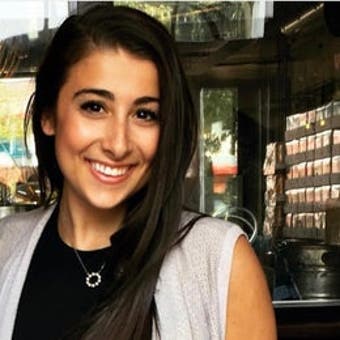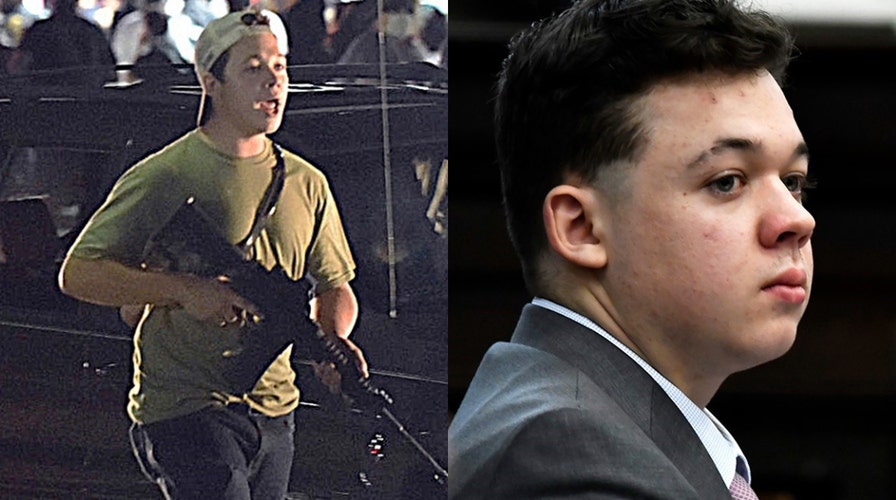Fox News Flash top headlines for November 12
Fox News Flash top headlines are here. Check out what's clicking on Foxnews.com.
A jury selected to determine the fate of accused Kenosha, Wisconsin, shooter Kyle Rittenhouse has sat through nine days of testimony, video and arguments as to whether or not the 18-year-old should be convicted on any of the half-dozen charges.
Rittenhouse faces up to life in prison if convicted of the most serious offense. He faces charges including first-degree intentional homicide, which is Wisconsin’s murder count; attempted first-degree intentional homicide; first-degree reckless homicide; reckless endangering; and illegal possession of a weapon by a person under 18
Rittenhouse was 17 when he and at least one friend said they traveled to the Wisconsin city from Illinois on Aug. 25, 2020, to protect local businesses and provide medical aid after two nights of unrest, with businesses being looted and set on fire.
KYLE RITTENHOUSE TRIAL: JURY INSTRUCTIONS THE NEXT BATTLEGROUND
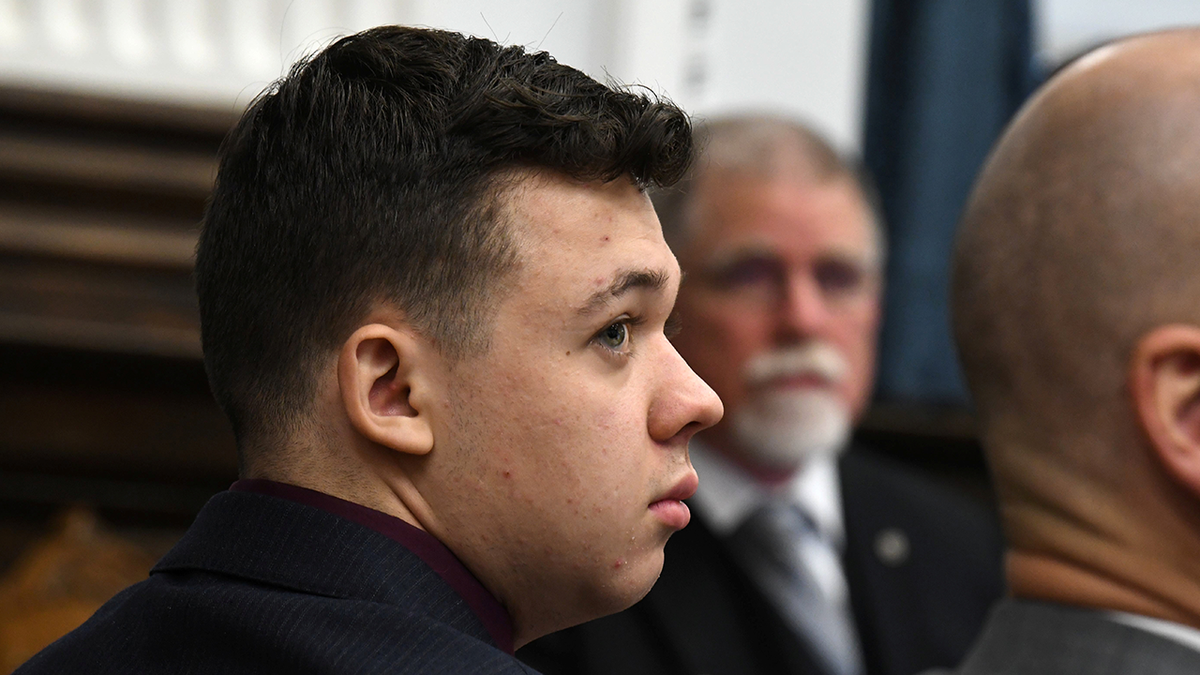
Kyle Rittenhouse looks on as John Black, use-of-force expert, testifies during Kyle Rittenhouse's trial at the Kenosha County Courthouse in Kenosha, Wisconsin, Nov. 11, 2021. (Mark Hertzberg/Pool via REUTERS)
He fatally shot Joseph Rosenbaum, 36, in an initial confrontation and just moments later fatally shot Anthony Huber, 26, and wounded Gaige Grosskreutz, 27.
KYLE RITTENHOUSE TRIAL: DEFENSE RESTS ITS CASE, JURY EXPECTED TO BEGIN DELIBERATIONS MONDAY
The defense rested its case on Thursday after approximately two and a half days of witness testimony. Attorneys have repeatedly argued that their client was acting in self-defense when he fired his semi-automatic rifle.
The prosecution’s arguments lasted roughly five days, with the state arguing that Rittenhouse instigated the bloodshed.

Kyle Rittenhouse watches video of himself on the night of the shootings during cross examination while testifying at his trial at the Kenosha County Courthouse on November 10, 2021. (Photo by Mark Hertzberg-Pool/Getty Images)
During the trial, jury has heard at times explosive testimony, including from Gaige Grosskreutz, the sole survivor of the shooting, and Rittenhouse himself.
KYLE RITTENHOUSE TRIAL: WHAT IS THE SELF-DEFENSE LAW?
After instructions and closing arguments from each side on Monday, 12 jurors will be randomly selected from the pool of 18 and be sent away for deliberations.
Here are some of the biggest moments in the trial so far, in chronological order:
Jury sees video from night of Aug. 25, 2020
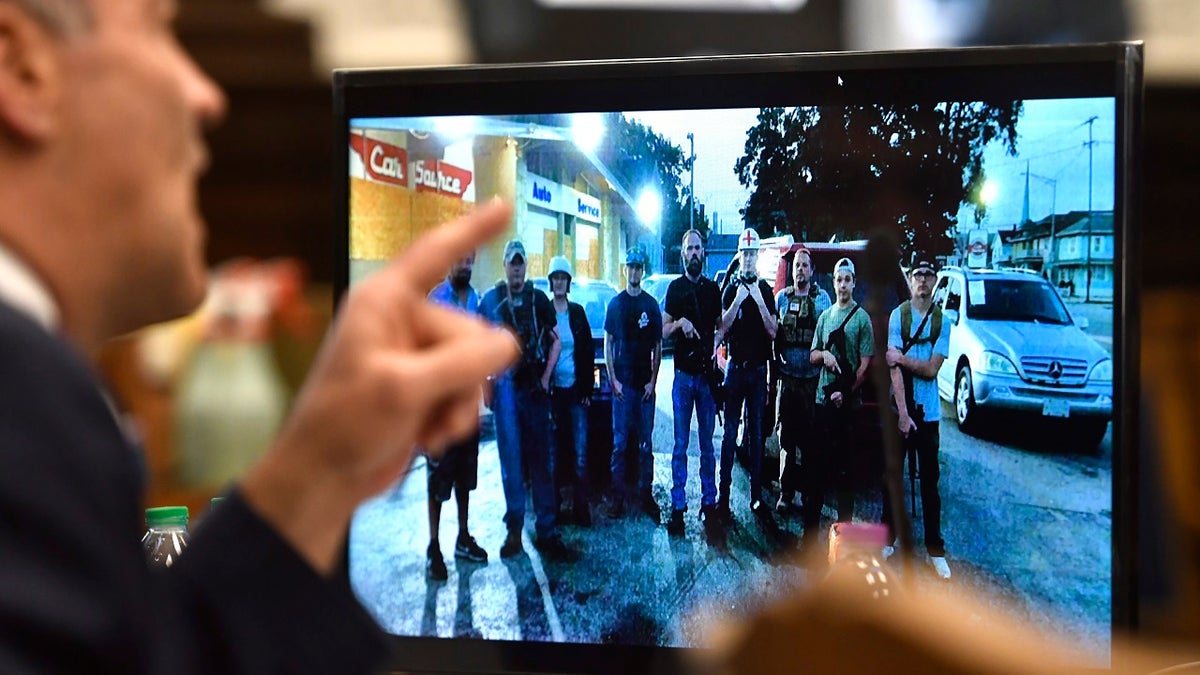
Mark Richards, lead attorney for Kyle Rittenhouse, shows a photograph with Kyle Rittenhouse, second from right, along with Dominic Black, right, from the evening of Aug. 25, 2020, as he cross examines Black during Kyle Rittenhouse's trial at the Kenosha County Courthouse in Kenosha, Wis, on Tuesday, Nov. 2, 2021. (Sean Krajacic/The Kenosha News via AP, Pool) (Sean Krajacic/The Kenosha News via AP, Pool)
Videos from the night of the shootings have become some of the central pieces of evidence, being used for arguments from both sides. Jurors were shown a wealth of cell phone, drone and other video footage that captured the chaos and the repeated sound of gunfire.
Jurors on Nov. 3 were introduced to footage showing Joseph Rosenbaum chasing Rittenhouse and throwing a plastic bag at him just before the man was gunned down.
Someone is heard yelling "F--- you!," followed by the sounds of the four shots Rittenhouse fired, killing Joseph Rosenbaum, who was the first of three men Rittenhouse shot that night, two of them fatally.
They also saw footage from Richie McGinnis, a reporter for the Daily Caller who interviewed Rittenhouse in Kenosha before the shootings, and Drew Hernandez, a self-proclaimed "public commentator."
And when Rittenhouse took the stand on Wednesday, video was used – and became a topic of debate between both side – as each tried to depict the amount of time between each shooting for the benefit of their arguments.
Gaige Grosskreutz, sole survivor of Aug. 25, 2020, shootings, says he unintentionally pointed gun at Rittenhouse, who he thought was an 'active shooter'
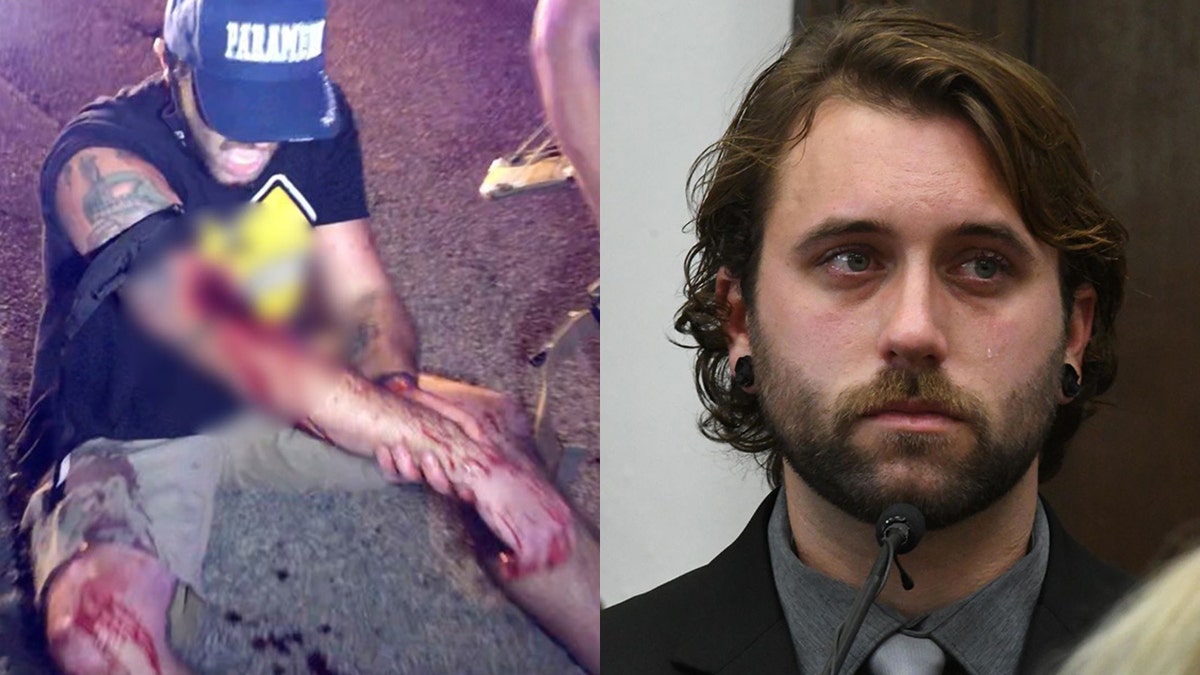
Gaige Grosskreutz becomes emotional as he testifies about being shot in the right arm during the Kyle Rittenhouse trial at the Kenosha County Courthouse on November 8, 2021 in Kenosha, Wisconsin. (Photo by Mark Hertzberg-Pool/Getty Images) (Getty Images)
Protester and medic Gaige Grosskreutz, 27, was the third and final man shot by Kyle Rittenhouse on Aug. 25, 2020. Prosecutors called Grosskreutz the stand on Nov. 8, when he recounted how he drew his own pistol after the bloodshed started.
Grosskreutz said he had gone to the protest in Kenosha to serve as a volunteer medic, wearing a hat that said "paramedic" and carrying medical supplies, in addition to a loaded pistol. He said his permit to carry a concealed weapon had expired and he did not have a valid one that night.
Under questioning from the prosecution, Grosskreutz said he had his hands raised as he closed in on Rittenhouse and didn't intend to shoot the young man. Prosecutor Thomas Binger asked Grosskreutz why he didn’t shoot first.
"That’s not the kind of person that I am. That’s not why I was out there," he said. "It’s not who I am. And definitely not somebody I would want to become."
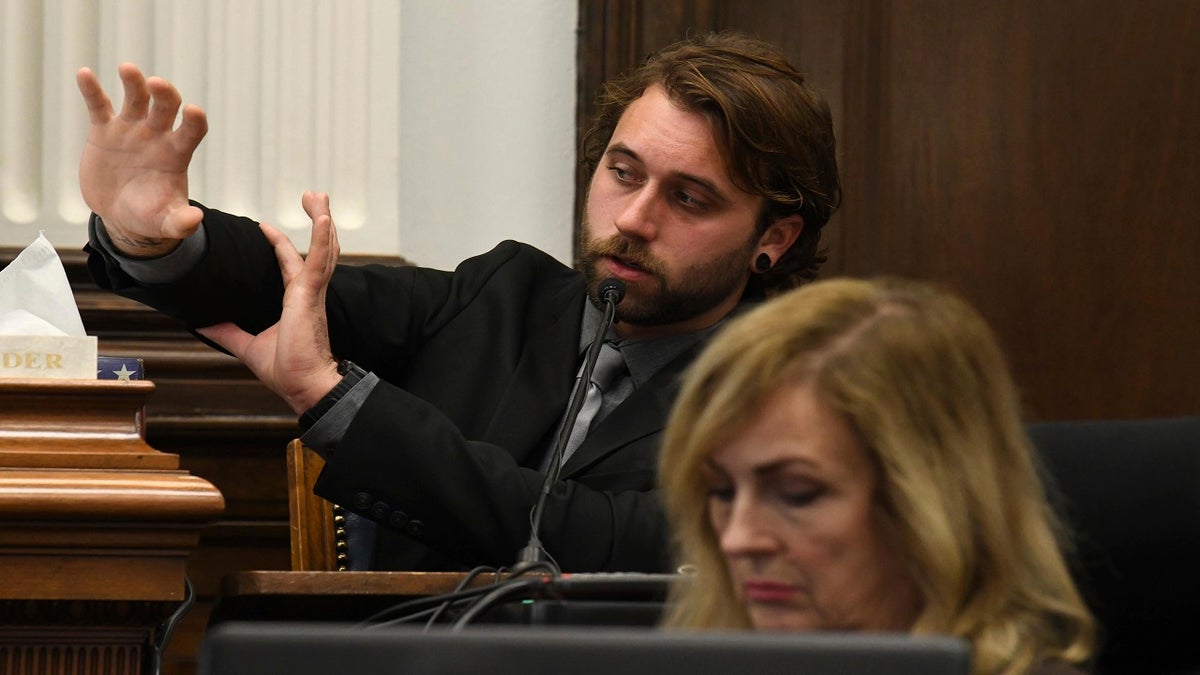
Gaige Grosskreutz talks about the permanent injuries to his right arm and hand as he testifies about being shot, during the Kyle Rittenhouse trial at the Kenosha County Courthouse on Monday, Nov. 8, 2021. ((Mark Hertzberg/Pool Photo via AP))
But his testimony unraveled under questioning from the defense. During cross-examination, Rittenhouse defense attorney Corey Chirafisi asked: "It wasn’t until you pointed your gun at him, advanced on him … that he fired, right?"
"Correct," Grosskreutz replied. The defense also presented a photo showing Grosskreutz pointing the gun at Rittenhouse, who was on the ground with his rifle pointed up at Grosskreutz.
Grosskreutz, under follow-up questioning from the prosecutor, said he did not intend to point his weapon at Rittenhouse.
Grosskreutz explained how he thought Rittenhouse "was an active shooter." Asked what was going through his mind as he got closer to the 17-year-old Rittenhouse, he said, "That I was going to die."

Defense attorney Corey Chirafisi questions shooting victim Gaige Grosskreutz about the moment he was shot by Kyle Rittenhouse during the Kyle Rittenhouse trial at the Kenosha County Courthouse on Nov. 8, 2021. (Mark Hertzberg-Pool/Getty Images)
Prosecutors showed graphic images and videos of the injuries that Grosskreutz had suffered when the bullet tore away a large portion of his bicep.
Chirafisi also sought to portray Grosskreutz as dishonest in his description of the moments right before he was shot, with Chirafisi asserting that Grosskreutz was chasing Rittenhouse with his gun out. Grosskreutz denied he was chasing Rittenhouse.
Chirafisi said Grosskreutz lied when he initially told multiple police officers that he dropped his weapon.
He also pointed to Grosskreutz’s lawsuit against the city of Kenosha, in which he alleges police enabled the violence by allowing an armed militia to have the run of the streets during the demonstration.
"If Mr. Rittenhouse is convicted, your chance of getting 10 million bucks is better, right?" Chirafisi said.
Kyle Rittenhouse takes the stand in his own defense
The 18-year-old defendant was called to the stand on Wednesday to testify in his own defense.
In an account largely corroborated by video and the prosecution’s own witnesses, Rittenhouse said that the first man cornered him and put his hand on the barrel of Rittenhouse's rifle, the second man hit him with a skateboard, and the third man came at him with a gun of his own.
During his hourslong testimony, Rittenhouse said that Rosenbaum threatened his life twice.
He said he had been putting out fires and asking people if they needed medical help when he saw Rosenbaum carrying a steel chain and wearing a mask. Rosenbaum began screaming at him, he said.
"He was just mad about something. He's screaming, 'If I catch any of you (expletives) alone I'm going to (expletive) kill you.'"

Kyle Rittenhouse is sworn in to testify during his trial at the Kenosha County Courthouse on Wednesday in Kenosha, Wisconsin. (Getty Images)
When he encountered Rosenbaum again later, Rosenbaum shouted, "I'm going to cut your (expletive) hearts out and kill you," Rittenhouse said.
Later, he was walking with a fire extinguisher after hearing protesters were burning cars at one of the lots his friends were trying to protect. Rittenhouse said he saw a fire in a truck on one of the lots then Joshua Ziminski approached him with a gun. Rosenbaum came out from behind some cars and "ambushed" him, Rittenhouse testified.
He said he tried to run away but Rosenbaum chased him as Ziminski yelled "get him" and "kill him." Rittenhouse said Rosenbaum threw a bag at him that he mistook for the chain, and that he pointed his rifle at Rosenbaum but Rosenbaum didn't stop. He heard a gunshot behind him and "I remember his hand on the barrel of my gun," Rittenhouse said.
He said he fired four times, went up to Rosenbaum to see if he could help him, then ran away because people were yelling "get his ass, get him, get him."
He also said later that he feared that if he let Rosenbaum take his gun, "he would have used it and killed me with it and probably killed more people."
Rittenhouse said Huber hit him in the neck with a skateboard and someone hit him in the back of the head with a rock, causing him to stumble. A man tried to kick him in the face after he went down, he said. He fired twice at that man but missed. Rittenhouse said he feared the man "would have stomped my face in."
Huber hit him in the neck again with the skateboard and grabbed his gun, Rittenhouse said.

Kyle Rittenhouse talks about how Gaige Grosskreutz was holding his gun when Rittenhouse shot him on Aug. 25, 2020, while testifying during his trial at the Kenosha County Courthouse on Nov. 10, 2021. (Sean Krajacic/Pool via REUTERS TPX IMAGES OF THE DAY)
"I can feel the strap coming off my body," he said. "I fire one shot."
In the next instant, Grosskreutz ran up to him. He lowered his rifle as Grosskreutz raised his hands in a "surrender" motion. But Grosskreutz was holding a pistol and as Rittenhouse lowered his weapon Grosskreutz pointed the pistol "directly at my head," Rittenhouse said. He fired once, hitting Grosskreutz in the arm.
Rittenhouse testified that after he shot Grosskreutz he approached a line of police vehicles with his hands up.
"People were screaming and I'm just trying to get to the police," he said. "I didn't do anything wrong. I defended myself."
He walked up to a squad car and told an officer he had just shot somebody. "The officer said 'get the (expletive) back or you're going to be pepper sprayed' and ‘go home, go home, go home,’" he said.
He turned himself in at the Antioch Police Department about an hour later because the Kenosha station was barricaded, he said.
At one point, as Rittenhouse began crying on the stand and appeared unable to speak, his mother, Wendy Rittenhouse, sobbed loudly in the courtroom. After the judge called a recess, jurors walked by Rittenhouse and looked on as he continued to cry.
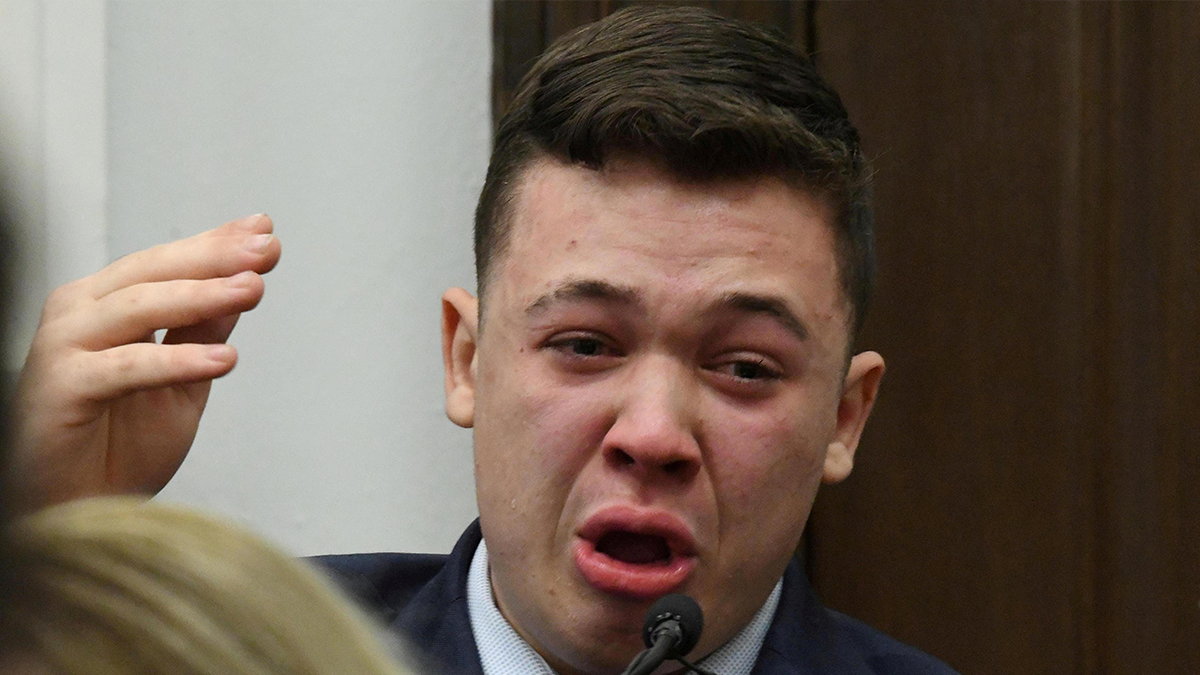
Kyle Rittenhouse breaks down on the stand as he testifies during his trial at the Kenosha County Courthouse on Nov. 10, 2021. (Mark Hertzberg/Pool via REUTERS/File Photo)
After the morning outburst, he was largely composed the rest of the day, though his voice seemed to break at times as he came under tough cross-examination.
Prosecutor Thomas Binger went hard at Rittenhouse all afternoon during cross-examination, walking him through each of the shootings. Rittenhouse continually pushed back, saying he had no choice but to fire.
Rittenhouse said he "didn't want to have to shoot" Joseph Rosenbaum, the first man to fall that night, but he said Rosenbaum was chasing him and had threatened to kill him earlier.
Rittenhouse also acknowledged that the strap holding his gun was in place and that he had both hands on the weapon. And Binger suggested that Rosenbaum might have been trying to bat the rifle away.
The prosecutor sought to drive home the state's contention that Rittenhouse created the dangerous situation in the first place.
"You understand that when you point your AR-15 at someone, it may make them feel like you’re going to kill them, correct?" Binger asked.
Defense files motion for mistrial with prejudice after prosecution's questioning of Rittenhouse
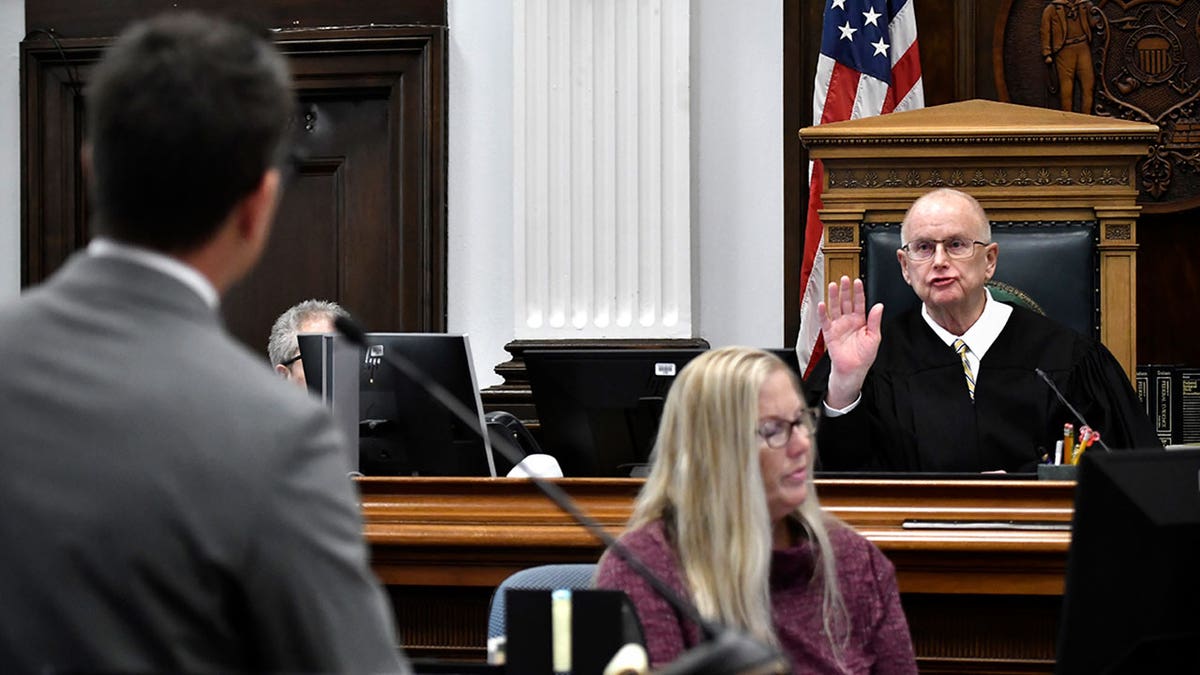
Judge Bruce Schroeder, right, reprimands Assistant District Attorney Thomas Binger, left, in his conduct in line of questioning while cross-examining Kyle Rittenhouse during the trial at the Kenosha County Courthouse on Wednesday. (Sean Krajacic-Pool/Getty Images)
During a break in Rittenhouse’s testimony, defense attorney Corey Chirafisi announced he was filing a motion for mistrial with prejudice – meaning the case could not be re-filed. Judge Bruce Schroeder said he would consider the motion, and has not yet provided any additional information regarding his decision.
Chrirafisi’s motion came after Assistant District Attorney Thomas Binger asked a number of out-of-bounds questions or made unethical implications during his cross-examination.
Rittenhouse’s attorney also accused Binger of commenting on his client’s right to remain silent about the case, to which Binger responded that the defendant was tailoring his testimony to details already introduced in court.
That also angered Schroeder, who called it a "grave constitutional violation" to talk about the defendant’s silence and warning him that he "better stop."
"That’s basically, it’s been basic law in this country for 40 years, 50 years," Schroeder said. "I have no idea why you would do something like that."
And Binger was also accused of questioning Rittenhouse about something that the judge had previously ordered would not be admissible during the trial.
Specifically, prosecutors earlier this year sought permission to introduce into evidence a brief video taken 15 days before the protest shootings, in which Rittenhouse is heard watching some men exit a CVS pharmacy and commenting that he wished he had his rifle so he could shoot them because he thought they were shoplifters.
CLICK HERE TO GET THE FOX NEWS APP
Binger argued at a pretrial hearing that it showed Rittenhouse’s mindset as "a teenage vigilante, involving himself in things that don’t concern him." But Schroeder questioned its relevance and said at a pretrial hearing that he was inclined not to allow it — but suggested he might reassess that at trial.
Binger peppered Rittenhouse with question after question asking him whether it was acceptable to use deadly force to protect people. The defense eventually objected and Schroeder angrily sent the jury out.
When Binger told the judge he had left the door open in his early ruling, Schroeder yelled: "For me! Not for you!"
Fox News' Jiovanni Lieggi and The Associated Press contributed to this report.




















